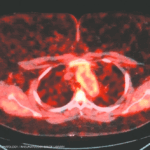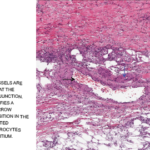Common form of primary vasculitis difficult to identify, treat, but latest research suggests potential new therapeutic targets
Search results for: giant cell arteritis
Diagnose, Manage and Treat Giant Cell Arteritis
A rheumatologist at the California Rheumatology Alliance 10th Annual Medical & Scientific Meeting in San Francisco shares research findings on this inflammatory blood vessel disease
Letters: More on the History of Polymyalgia Rheumatica and Giant Cell Arteritis
These syndromes were completely ignored in U.S. literature for years
Two Inflammatory Conditions—Polymyalgia Rheumatica and Giant Cell Arteritis—Share Clinical Connection
Polymyalgia rheumatica (PMR) and giant cell arteritis (GCA) have common clinical and epidemiologic links, but they need not occur synchronously
Giant Cell Arteritis
Giant cell arteritis (GCA)—a type of vasculitis—is a group of diseases whose typical feature is inflammation of blood vessels. The blood vessels most commonly involved are the arteries of the scalp and head (especially the arteries over the temples), which is why another term for GCA is “temporal arteritis.” GCA can overlap with another rheumatic disease called polymyalgia rheumatica, and symptoms of the two conditions can occur at the same time or separately. The causes of GCA and polymyalgia rheumatica are unknown.
Higher Fracture Risk in Patients with Polymyalgia Rheumatica, Giant-Cell Arteritis
NEW YORK (Reuters Health)—Patients with polymyalgia rheumatica (PMR) and giant-cell arteritis (GCA) have similarly increased risks of fracture, compared with the general population, researchers have found. “It is of surprise that patients with GCA have a similar fracture risk to those with PMR,” Dr. Zoe Paskins from Keele University, in Staffordshire, told Reuters Health by…

New Analysis Reveals More Potential Contributors to Takayasu Arteritis
Recent research led to development of a cumulative genetic risk score for Takayasu arteritis, identifying differing susceptibility between groups with different genetic ancestries.

Case Report: A Polyarteritis Nodosa Conundrum
Polyarteritis nodosa (PAN) is a systemic necrotizing vasculitis that typically affects medium-sized muscular arteries. The clinical subsets of PAN are idiopathic, generalized, secondary hepatitis B virus (HBV) associated and cutaneous PAN. These clinical subsets are important because of their therapeutic implications. Virtually any organ system can be affected in generalized PAN, but this vasculitis tends…

Vasculitis Guidelines in Focus, Part 5: Takayasu Arteritis
Andy Abril, MD, a lead author of the ACR/VF guideline for Takayasu arteritis (TAK), discusses the recommendations for TAK.

Vasculitis Guidelines in Focus, Part 4: Polyarteritis Nodosa
Jason Springer, MD, MS, served as one of the lead authors of the ACR/VF guidelines for polyarteritis nodosa (PAN), and talks about the recommendations specific to PAN here.
- « Previous Page
- 1
- 2
- 3
- 4
- 5
- …
- 18
- Next Page »